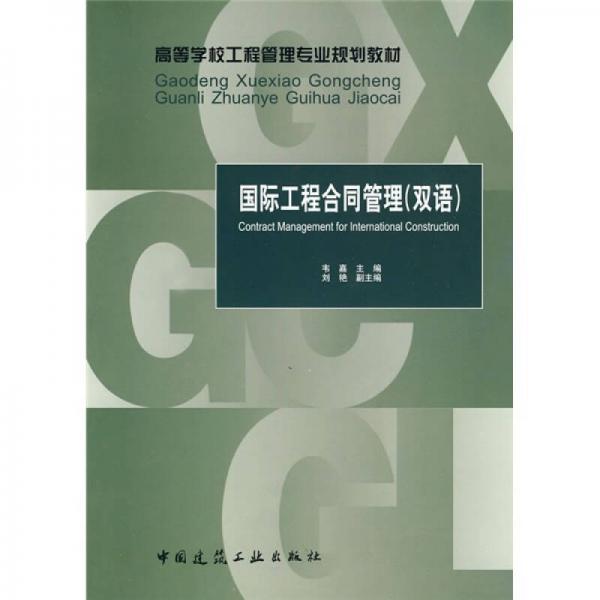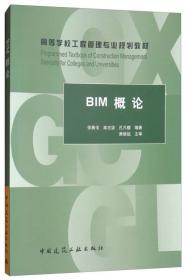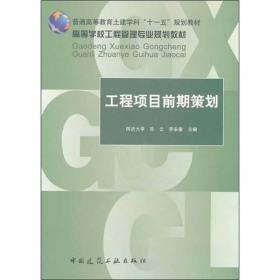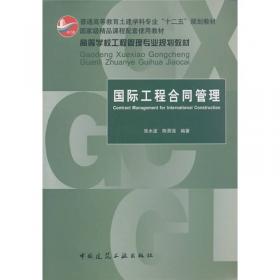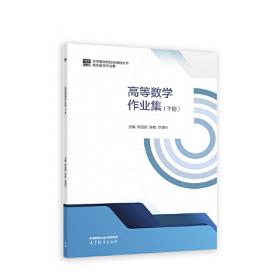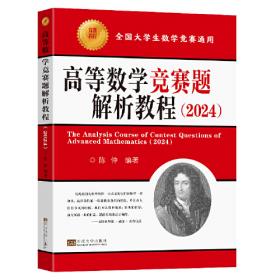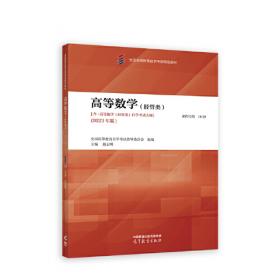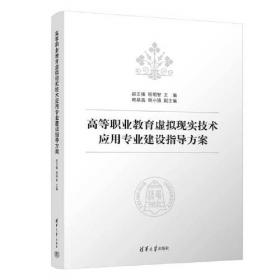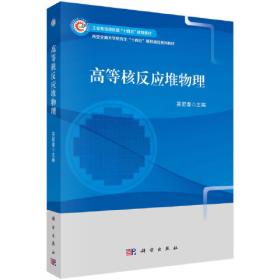高等学校工程管理专业规划教材:国际工程合同管理(双语)
出版时间:
2010-02
版次:
1
ISBN:
9787112117161
定价:
26.00
装帧:
平装
开本:
16开
纸张:
胶版纸
页数:
211页
字数:
402千字
正文语种:
英语,简体中文
7人买过
-
《国际工程合同管理(双语)》介绍了国际建筑市场常用的合同管理的主要内容,其中包括建筑业的概况;建设项目的参与方;建筑工程的采购方式;招标及合同构成;合同条款;承包商的合同义务;雇主的合同义务;时间;支付;合同管理者的角色;分包;合同的暂停和终止;合同纠纷的解决方法;仲裁与诉讼。
为适应双语教学的要求,同时考虑到该课程的性质比较适合双语教学,因此《国际工程合同管理(双语)》以英文编写。同时,为了更好地帮助读者更深入地理解《国际工程合同管理(双语)》内容,书中对重要的概念、术语以及较难理解的句子进行了详细解释,并有译文。
《国际工程合同管理(双语)》不仅适用于工程管理和工程造价专业的本科生及研究生,而且对从事国际工程承包管理的合同管理人员也具有一定的参考价值。 Chapter1IntroductiontoConstructionIndustry
Chapter2ThePartiesToTheContracts
2.1Employer
2.2Contractor
2.3ContractAdministrator
Chapter3ProcurementMethodsofConstructionContracts
3.1GeneralContracting
3.1.1Background
3.1.2BasicCharacteristicsofTraditionalGeneralContracts
3.2Designandbuild
3.2.1Background
3.2.2FeaturesofDesignandBuildContracts
3.3Managementcontracting
3.4ConstructionManagement
3.5EPC
Chapter4TenderingandContractFormation
4.1Agreement
4.1.1Offer
4.1.2Acceptance
4.2Contractsmadebytender
4.2.1Purposeoftendering
4.2.2Tenderingprocedures
4.2.3Legalanalysisoftenders
4.2.4Problemsintheconstitutionofbids
Chapter5ContraetTerms
5.1ExpressTerms
5.1.1Termsandrepresentations
5.1.2Contractdocuments
5.1.3Priorityofdocuments
5.2ImpliedTerms
5.2.1Implicationinlaw
5.2.2Implicationinfact
Chapter6ContractorsObligations
6.1Standardofwork
6.1.1Workmanship
6.1.2Standardofmaterials
6.1.3Suitabilityofmaterials
6.1.4Suitabilityofthebuilding
6.2Statutoryobligations
6.21Contractorsduties
6.2.2Divergencebetweenstatutoryrequirementsandcontract
6.2.3Emergencywork
6.3Co-ordinationandManagement
6.3.1Controlofpersonsonthesite
6.3.2Exclusionofpersonsfromtheworks
6.3.3Antiquities
6.3.4Testingandapprovals
6.4Transferofmaterials
6.4.1Generalposition
6.4.2Contractprovisions
6.4.3Retentionoftitle
Chapter7EmployersObligations
7.1Impliedobligations
7.1.1Non-hindranceandco-operation
7.1.2Specificexamplesofnon-hindranceandco-operation
7.2ExpresstermsofEmployersObligations
7.2.1Payment
7.2.2NecessaryNominations
7.2.3SiteObligations
7.2.4Insurance
7.3ResponsibilityfortheContractAdministrator
7.4Responsibilityforsiteconditions
7.4.1ContractorsRisk
7.4.2EmployersResponsibility
Chapter8Time
8.1Commencement
8.1.1Possessionofthesite
8.1.2Dateforpossession
8.1.3DeferredPossession
8.2Progress
8.3Completion
8.3.1MeaningofCompletion
8.3.2DateforCompletion
8.3.3Delayincompletion"
8.3.4Sectionalcompletionandpartialpossession
8.3.5Effectsofcompletion
8.4ContractorsObligationsafterCompletion
8.5ExtensionsofTime
8.5.1Groundsforextensionsoftime
8.5.2Relevanteventsasagroundforextensionsoftime
Chapter9Payment
9.1Employersobligationstopay
9.1.1Contractprice
9.1.2Timeofpayment
9.1.3Effectofcertificates
9.2Contractsum
9.2.1Definitionsinthecontracts
9.2.2Permissiblechanges
9.3Variations
9.3.1Theneedforvariations
9.3.2Definitionofvariations
9.3.3Issuingvariations
9.3.4Valuingvariations
9.4Fluctuations
9.5Retentionmoney
Chapter10RoleoftheContractAdministrator
10.1Contractadministratorastheemployersagent
10.1.1Extentofpowers
10.1.2Functionsandduties
10.2Contractadministratorasindependentadjudicator
10.2.1Certification
10.2.2Otherdecision-makingfunctions
10.2.3Liabilityfornegligentdecision-making
Chapter11SubcontractingandNomination
11.1OutlineofSubcontracting
11.1.1Whatisconstructionsubcontracting
11.1.2Reasonsforsubcontracting
11.1.3Typesofsubcontractors
11.2Domesticsubcontractor
11.2.1Selectionofdomesticsubcontractors
11.2.2Relationshipbetweenthemaincontractorandsubcontractors
11.3NominatedSubcontracting
11.3.1WhyNominate
11.3.2Differencebetweennominatedsubcontractorsanddomesticsubcontractors
11.4Paymenttosubcontractors
Chapter12SuspensionandTerminationofContract
12.1SuspensionofWork
12.1.1SuspensionbyEmployer
12.1.2SuspensionbyContractor
12.2TerminationofWork
12.3TerminationbyEmployer
12.3.1TheEventIncurringTerminationforDefault
12.3.2StepsofTerminationforCauseTakenbyEmployer
12.3.3TerminationforConvenience
12.4TerminationbyContractor
Chapter13AlternativeDisputeResolutions
13.1DefinitionofADR
13.2FeaturesofADR
13.3FormsofADR
13.3.1Negotiation
13.3.2Conciliation
13.3.3Mediation
13.3.4DisputeAdjudicationBoard
13.4TheMediation/ConciliationAgreement
13.5TheProcedureofDRB/DAB
13.5.1SelectionandAppointmentofDisputeBoardMembers
13.5.2DisputeBoardRules
13.5.3TheWorkoftheDisputeBoard
Chapter14ArbitrationandLitigation
14.1Arbitration
14.1.1AdvantagesofArbitrationoverLitigation
14.1.2DisadvantagesofArbitration
14.1.3ArbitrationInstitutions
14.1.4ChoosingofArbitrator
14.1.5DutyofArbitrators
14.1.6TheArbitralProceedings
14.2Litigation
14.2.1LitigationorArbitration
14.2.2ProcessofLitigation
Glossary
References
-
内容简介:
《国际工程合同管理(双语)》介绍了国际建筑市场常用的合同管理的主要内容,其中包括建筑业的概况;建设项目的参与方;建筑工程的采购方式;招标及合同构成;合同条款;承包商的合同义务;雇主的合同义务;时间;支付;合同管理者的角色;分包;合同的暂停和终止;合同纠纷的解决方法;仲裁与诉讼。
为适应双语教学的要求,同时考虑到该课程的性质比较适合双语教学,因此《国际工程合同管理(双语)》以英文编写。同时,为了更好地帮助读者更深入地理解《国际工程合同管理(双语)》内容,书中对重要的概念、术语以及较难理解的句子进行了详细解释,并有译文。
《国际工程合同管理(双语)》不仅适用于工程管理和工程造价专业的本科生及研究生,而且对从事国际工程承包管理的合同管理人员也具有一定的参考价值。
-
目录:
Chapter1IntroductiontoConstructionIndustry
Chapter2ThePartiesToTheContracts
2.1Employer
2.2Contractor
2.3ContractAdministrator
Chapter3ProcurementMethodsofConstructionContracts
3.1GeneralContracting
3.1.1Background
3.1.2BasicCharacteristicsofTraditionalGeneralContracts
3.2Designandbuild
3.2.1Background
3.2.2FeaturesofDesignandBuildContracts
3.3Managementcontracting
3.4ConstructionManagement
3.5EPC
Chapter4TenderingandContractFormation
4.1Agreement
4.1.1Offer
4.1.2Acceptance
4.2Contractsmadebytender
4.2.1Purposeoftendering
4.2.2Tenderingprocedures
4.2.3Legalanalysisoftenders
4.2.4Problemsintheconstitutionofbids
Chapter5ContraetTerms
5.1ExpressTerms
5.1.1Termsandrepresentations
5.1.2Contractdocuments
5.1.3Priorityofdocuments
5.2ImpliedTerms
5.2.1Implicationinlaw
5.2.2Implicationinfact
Chapter6ContractorsObligations
6.1Standardofwork
6.1.1Workmanship
6.1.2Standardofmaterials
6.1.3Suitabilityofmaterials
6.1.4Suitabilityofthebuilding
6.2Statutoryobligations
6.21Contractorsduties
6.2.2Divergencebetweenstatutoryrequirementsandcontract
6.2.3Emergencywork
6.3Co-ordinationandManagement
6.3.1Controlofpersonsonthesite
6.3.2Exclusionofpersonsfromtheworks
6.3.3Antiquities
6.3.4Testingandapprovals
6.4Transferofmaterials
6.4.1Generalposition
6.4.2Contractprovisions
6.4.3Retentionoftitle
Chapter7EmployersObligations
7.1Impliedobligations
7.1.1Non-hindranceandco-operation
7.1.2Specificexamplesofnon-hindranceandco-operation
7.2ExpresstermsofEmployersObligations
7.2.1Payment
7.2.2NecessaryNominations
7.2.3SiteObligations
7.2.4Insurance
7.3ResponsibilityfortheContractAdministrator
7.4Responsibilityforsiteconditions
7.4.1ContractorsRisk
7.4.2EmployersResponsibility
Chapter8Time
8.1Commencement
8.1.1Possessionofthesite
8.1.2Dateforpossession
8.1.3DeferredPossession
8.2Progress
8.3Completion
8.3.1MeaningofCompletion
8.3.2DateforCompletion
8.3.3Delayincompletion"
8.3.4Sectionalcompletionandpartialpossession
8.3.5Effectsofcompletion
8.4ContractorsObligationsafterCompletion
8.5ExtensionsofTime
8.5.1Groundsforextensionsoftime
8.5.2Relevanteventsasagroundforextensionsoftime
Chapter9Payment
9.1Employersobligationstopay
9.1.1Contractprice
9.1.2Timeofpayment
9.1.3Effectofcertificates
9.2Contractsum
9.2.1Definitionsinthecontracts
9.2.2Permissiblechanges
9.3Variations
9.3.1Theneedforvariations
9.3.2Definitionofvariations
9.3.3Issuingvariations
9.3.4Valuingvariations
9.4Fluctuations
9.5Retentionmoney
Chapter10RoleoftheContractAdministrator
10.1Contractadministratorastheemployersagent
10.1.1Extentofpowers
10.1.2Functionsandduties
10.2Contractadministratorasindependentadjudicator
10.2.1Certification
10.2.2Otherdecision-makingfunctions
10.2.3Liabilityfornegligentdecision-making
Chapter11SubcontractingandNomination
11.1OutlineofSubcontracting
11.1.1Whatisconstructionsubcontracting
11.1.2Reasonsforsubcontracting
11.1.3Typesofsubcontractors
11.2Domesticsubcontractor
11.2.1Selectionofdomesticsubcontractors
11.2.2Relationshipbetweenthemaincontractorandsubcontractors
11.3NominatedSubcontracting
11.3.1WhyNominate
11.3.2Differencebetweennominatedsubcontractorsanddomesticsubcontractors
11.4Paymenttosubcontractors
Chapter12SuspensionandTerminationofContract
12.1SuspensionofWork
12.1.1SuspensionbyEmployer
12.1.2SuspensionbyContractor
12.2TerminationofWork
12.3TerminationbyEmployer
12.3.1TheEventIncurringTerminationforDefault
12.3.2StepsofTerminationforCauseTakenbyEmployer
12.3.3TerminationforConvenience
12.4TerminationbyContractor
Chapter13AlternativeDisputeResolutions
13.1DefinitionofADR
13.2FeaturesofADR
13.3FormsofADR
13.3.1Negotiation
13.3.2Conciliation
13.3.3Mediation
13.3.4DisputeAdjudicationBoard
13.4TheMediation/ConciliationAgreement
13.5TheProcedureofDRB/DAB
13.5.1SelectionandAppointmentofDisputeBoardMembers
13.5.2DisputeBoardRules
13.5.3TheWorkoftheDisputeBoard
Chapter14ArbitrationandLitigation
14.1Arbitration
14.1.1AdvantagesofArbitrationoverLitigation
14.1.2DisadvantagesofArbitration
14.1.3ArbitrationInstitutions
14.1.4ChoosingofArbitrator
14.1.5DutyofArbitrators
14.1.6TheArbitralProceedings
14.2Litigation
14.2.1LitigationorArbitration
14.2.2ProcessofLitigation
Glossary
References
查看详情
-
全新
江苏省南京市
平均发货5小时
成功完成率98.53%
-
全新
江苏省无锡市
平均发货14小时
成功完成率94.96%
-
全新
广东省广州市
平均发货15小时
成功完成率91.79%
-
全新
江苏省南京市
平均发货6小时
成功完成率96.71%
-
全新
浙江省嘉兴市
平均发货9小时
成功完成率95.35%
-
全新
北京市海淀区
平均发货9小时
成功完成率97.86%
-
八五品
山东省滨州市
平均发货9小时
成功完成率89.1%
-
全新
浙江省嘉兴市
平均发货13小时
成功完成率94.91%
-
全新
江苏省无锡市
平均发货8小时
成功完成率96.6%
-
全新
广东省广州市
平均发货17小时
成功完成率93.15%
-
全新
天津市西青区
平均发货14小时
成功完成率90.83%
-
全新
广东省广州市
平均发货16小时
成功完成率92.99%
-
全新
广东省广州市
平均发货17小时
成功完成率92.52%
-
全新
广东省广州市
平均发货17小时
成功完成率94.61%
-
八五品
山东省枣庄市
平均发货12小时
成功完成率94.5%
-
八五品
山东省济南市
平均发货8小时
成功完成率93.78%
-
八五品
重庆市沙坪坝区
平均发货8小时
成功完成率82.87%
-
八五品
山东省滨州市
平均发货9小时
成功完成率95.43%
-
全新
北京市东城区
平均发货21小时
成功完成率88.68%
-
九五品
北京市通州区
平均发货33小时
成功完成率81.56%
-
全新
北京市通州区
平均发货9小时
成功完成率89.27%
-
全新
山东省潍坊市
平均发货16小时
成功完成率82.67%
-
全新
江苏省南京市
平均发货12小时
成功完成率85.39%
-
全新
北京市西城区
平均发货12小时
成功完成率94.18%
-
全新
江苏省无锡市
平均发货9小时
成功完成率96.52%
-
九品
吉林省白城市
平均发货10小时
成功完成率96.37%
-
全新
河北省保定市
平均发货15小时
成功完成率93.08%
-
全新
江苏省无锡市
平均发货9小时
成功完成率95.1%
-
全新
北京市顺义区
平均发货10小时
成功完成率93.52%
-
全新
天津市河东区
平均发货24小时
成功完成率89.16%
-
九品
北京市昌平区
平均发货6小时
成功完成率97.42%
-
全新
河北省保定市
平均发货15小时
成功完成率93.08%
-
全新
北京市房山区
平均发货10小时
成功完成率100%
-
全新
河北省沧州市
平均发货19小时
成功完成率100%
-
全新
北京市朝阳区
平均发货12小时
成功完成率94.1%
-
全新
天津市西青区
平均发货17小时
成功完成率74.19%
-
全新
广东省广州市
平均发货7小时
成功完成率90.45%
-
九五品
浙江省杭州市
平均发货32小时
成功完成率81.5%
-
八五品
江苏省苏州市
平均发货9小时
成功完成率90.11%
-
九五品
河北省廊坊市
平均发货2小时
成功完成率98.67%
-
全新
-
八五品
江苏省南京市
平均发货12小时
成功完成率92.46%
-
全新
上海市黄浦区
平均发货9小时
成功完成率94.7%
-
八五品
四川省成都市
平均发货8小时
成功完成率86.33%
-
八品
安徽省合肥市
平均发货11小时
成功完成率83.13%
-
八五品
安徽省合肥市
平均发货13小时
成功完成率89.39%
-
九五品
湖北省武汉市
平均发货10小时
成功完成率57.5%
-
全新
山东省泰安市
平均发货12小时
成功完成率83.33%
-
八五品
江苏省宿迁市
平均发货9小时
成功完成率90.77%
-
八五品
江苏省宿迁市
平均发货9小时
成功完成率85.78%

 占位居中
占位居中

